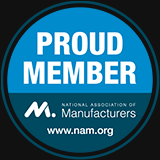
One concern when buying modern machinery is the safety of the equipment. No one wants to buy a product that could malfunction and hurt the operator or someone nearby. Because of this concern various organizations have been created to verify the safety of products.
UL is one of the oldest testing agencies in the country and provides certification on the safety of products as well as their environmental claims. However the UL marks may be confusing for people who are not familiar with their terminology. There is no such thing as general UL approval, instead they break up their certification into being listed, recognized, or classified. Once you know the difference between these three terms it becomes much easier to understand the dozens of marks that UL puts on products.
The UL listing service verifies that a manufacturer can make products that fulfill UL requirements, meaning that any product with the UL listed mark is produced by a company that limits product risks that can be reasonably foreseen. UL does not test each product in this case, instead they authorize the manufacturer to test their products and apply the UL listed mark themselves. However, UL does follow up with the manufacturer on a regular basis to make sure they are following correct procedures to test their products.
The UL recognition service is different in that it does not apply to end products. Instead it certifies that a component for a larger product meets UL standards. This mark is not seen as often by consumers, as the parts that get this certification are things like circuit boards and power supplies. These components are normally put into products in factories and may have limited use outside of another machine. Again, UL authorizes the manufacturer to test and label their parts with this mark and follows up regularly to ensure continued compliance with the certification.
UL classification service is the most nuanced of the three. According to UL’s terminology guide, the UL classification service is used “for the purpose of classification or evaluation with respect to one or more of the following: (1) specific risks only, e.g., casualty, fire or shock, (2) performance under specified conditions, (3) regulatory codes, (4) other standards, including international standards, or (5) such other conditions as UL may consider desirable.” This allows UL to have a wide array of marks in this area to give specific information to consumers about the standards of a product. For instance, the UL Classified Water Quality Mark certifies that a product is able to provide suitable drinking water for products such as filtration systems or water treatment additives.
http://blog.all-spec.com/2011/09/what-is-ul-certification/ By ALL-SPEC Andy 09/27/2011










